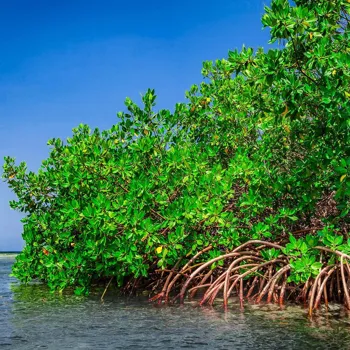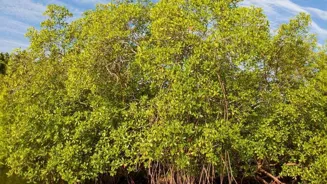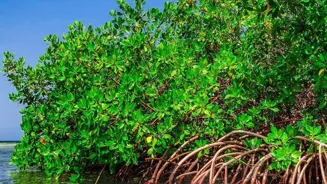Discover the secrets of the Sundarbans! Explore 10 incredible facts about this biodiverse wonderland. Read on to be amazed!
The Sundarbans, a name that evokes images of mystery and untamed beauty, is a vast
mangrove forest straddling India and Bangladesh. This UNESCO World Heritage site is not just a pretty picture; it's a vital ecosystem teeming with life and holding secrets that are only now being fully uncovered.

Let's dive into 10 incredible facts that will give you a new appreciation for this natural wonder.
The Sundarbans: largest mangrove forest, biodiversity hotspot, nature's shield
Did you know that the Sundarbans is the single largest mangrove forest in the world? Spanning over 10,000 square kilometers, it's a labyrinth of waterways, mudflats, and islands, creating a unique and dynamic environment.
These mangroves are not just trees; they are nature's shields, protecting the coastline from erosion and storm surges. The intricate root systems also act as nurseries for countless fish and crustaceans, making it a biodiversity hotspot.
The sheer scale of the Sundarbans is truly astonishing, a testament to the power and resilience of nature. It serves as a reminder of the importance of preserving such ecosystems for future generations.
Fact 2
A Royal Bengal Tiger Stronghold, but more than just tigers it has other species.

The Sundarbans: Home to Bengal Tigers & Diverse Wildlife
The Sundarbans is famously known as the home of the Royal Bengal Tiger, and it holds one of the largest populations of these majestic animals. However, it's not just about tigers; the Sundarbans is a treasure trove of biodiversity, with a wide array of flora and fauna calling it home.

From the elusive fishing cats and playful otters to the Gangetic dolphins and saltwater crocodiles, the Sundarbans is a haven for wildlife enthusiasts. The mangrove ecosystem supports a complex food web, with each species playing a vital role in maintaining the delicate balance of nature.
The rich biodiversity of the Sundarbans makes it a crucial area for conservation efforts, ensuring the survival of these incredible species and their habitat.
Mangrove trees thrive in salty Sundarbans, vital for ecosystem health
Mangrove trees are uniquely adapted to survive in the salty waters of the Sundarbans. They have developed various ingenious methods to cope with the high salt content, such as filtering salt through their roots or excreting it through their leaves.
This adaptation allows them to thrive in conditions where most other trees would perish. The mangroves' ability to tolerate salinity is crucial for the stability of the Sundarbans ecosystem.
They prevent erosion by binding the soil together and provide a vital habitat for many species that depend on brackish water. These trees are nature's engineers, playing a critical role in maintaining the health and integrity of this unique ecosystem.
The Sundarbans: a dynamic landscape shaped by nature's forces
The Sundarbans is a dynamic and ever-changing landscape, constantly shaped by the forces of nature. Erosion and sedimentation are ongoing processes, creating new islands and waterways while swallowing others. The tides play a significant role, flooding vast areas of the forest twice a day.
This constant flux creates a unique environment that supports a diverse range of species adapted to these changing conditions. The dynamic nature of the Sundarbans is a testament to the power of nature, a reminder that even the most established landscapes are subject to constant change.
Sundarbans mangroves vital for livelihoods, need sustainable management
The Sundarbans is not just a natural wonder; it's also a lifeline for millions of people who depend on it for their livelihoods. Fishing, honey collection, and forestry are the primary sources of income for the local communities.
The mangroves provide valuable resources, such as timber, fuel wood, and medicinal plants. Sustainable management of these resources is crucial to ensure the long-term well-being of both the people and the environment.
Balancing livelihood needs with conservation efforts is a challenge, but it's essential for the sustainable development of the Sundarbans region.
Sundarbans UNESCO recognition promotes conservation and responsible tourism
The Sundarbans was recognized as a UNESCO World Heritage Site in 1997, acknowledging its outstanding universal value. This designation highlights the importance of preserving this unique ecosystem for future generations.
UNESCO recognition brings increased attention to the area, attracting resources for conservation and sustainable development. It also encourages responsible tourism, promoting awareness and appreciation for the Sundarbans' natural and cultural heritage.
Being a World Heritage Site underscores the global significance of the Sundarbans and the shared responsibility to protect it.
AI Generated Content. Glance/InMobi shall have no liability for the content









